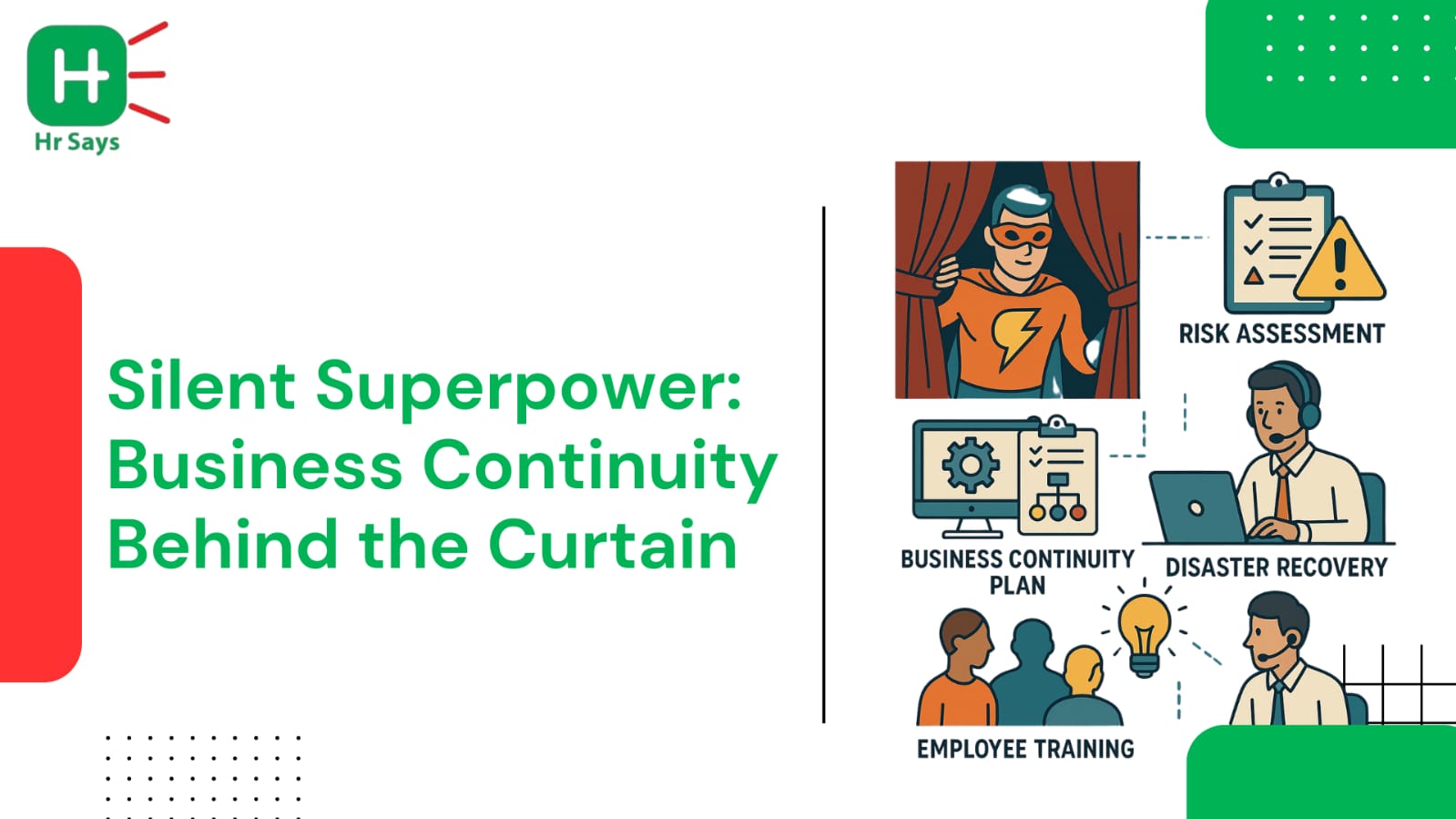So what happens when the unforeseen occurs and it could be a pandemic, market crash or a major technological breakdown? Most eyes turn to operations and IT. But quietly, and critically, it’s HR that holds the threads together. This blog uncovers how HR plays a larger role in business continuity than it’s given credit for.
The Missing Link: HR and Business Continuity
HR has always been seen as the people department—recruit, retain, repeat. But in times of crisis, it becomes something more. It becomes the anchor.
When continuity plans are drafted, HR isn’t just a supporting act. It's part of the core cast.
Why HR Is More Than Just Hiring
The department does more than fill seats. It manages:
● Workforce mobility and remote transitions
● Crisis communication and morale control
● Policy shifts and real-time compliance
● Employee well-being during disruptions
● Upskilling during downtimes
The people-first lens HR offers isn’t a soft skill. It’s a continuity skill.
Building Continuity From the Inside Out
Instead of reacting to disruption, HR can be positioned to anticipate and absorb it.
Talent Mobility as a Shock Absorber
When roles vanish or evolve overnight, it’s HR that remaps talent across business functions.
● Skill audits help redeploy staff quickly
● Temporary reskilling bridges immediate gaps
● Agile workforce models reduce downtime
Culture Becomes the Contingency
When plans fail, culture kicks in. A culture that values adaptability, transparency, and psychological safety becomes a fallback strategy. HR sets this tone. Daily.
Remote-Readiness Is Not a Tech Job Alone
Tech enables remote work. HR sustains it.
● Policies for WFH, flexible hours, burnout checks
● Virtual onboarding and training
● Keeping teams connected across screens
HR's Role in Risk Management
Risk isn’t only about firewalls and finances. It’s also about people.
Predicting Attrition Before It Happens
Through pulse surveys, engagement scores, and behavior mapping, HR spots risks that numbers miss. A disengaged team is a silent threat.
Ensuring Compliance Across Shifting Borders
As teams go remote or global, compliance becomes a moving target. HR aligns people practices with regional and global laws to avoid long-term liabilities.
Future-Proofing Through People
Long-term continuity isn’t just about bouncing back. It’s about bouncing forward.
Embedding Resilience in Everyday Roles
From leadership development to cross-functional projects, HR seeds resilience into daily operations.
Creating Continuity Champions
HR doesn’t have to carry the torch alone. It can build a system where:
● Managers are trained in crisis response
● Teams run continuity drills
● Leaders model adaptive behavior
This democratizes resilience.
Conclusion
Business continuity isn’t only about systems. It’s about people who keep those systems running—under pressure, under stress, and often, under-acknowledged. HR, when given the room and resources, isn’t just a function. It’s a force.

 HR is not just an administrative unit—it’s a business continuity driver. This blog explores how HR ensures resilience, redeployment, risk mitigation, and remote readiness during disruptions, positioning itself as a key player in long-term operational stability.
HR is not just an administrative unit—it’s a business continuity driver. This blog explores how HR ensures resilience, redeployment, risk mitigation, and remote readiness during disruptions, positioning itself as a key player in long-term operational stability.












.jpeg)
.jpeg)

.jpeg)

.jpeg)


.jpeg)

.jpeg)

.jpeg)


